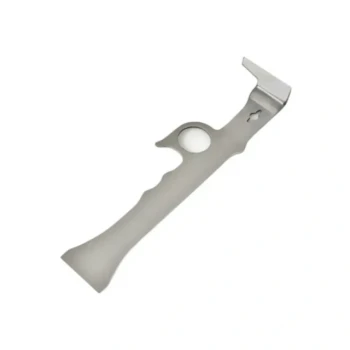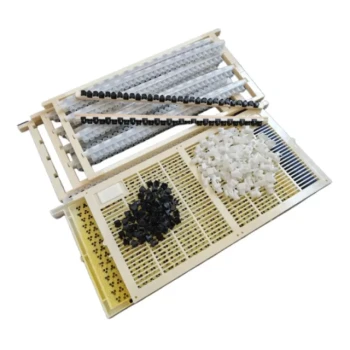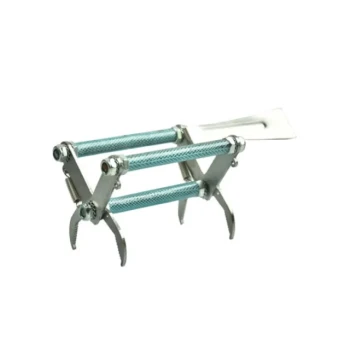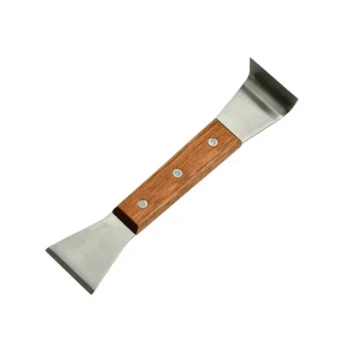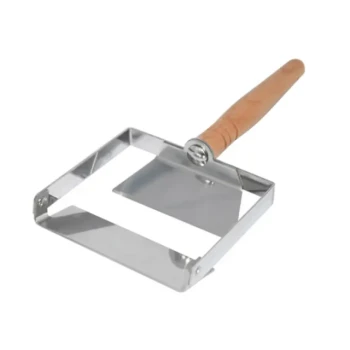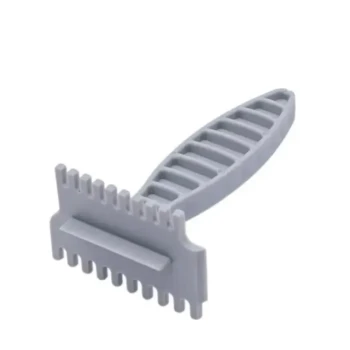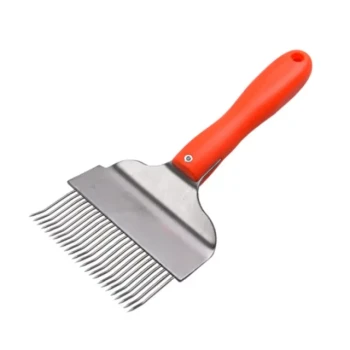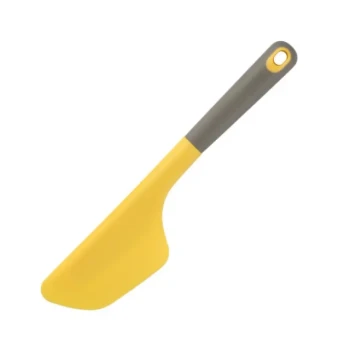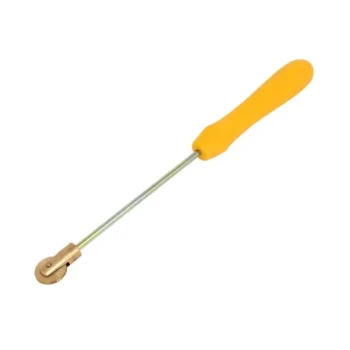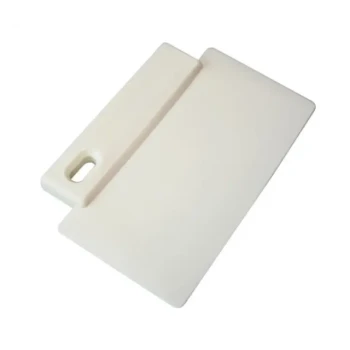At its core, queen rearing through grafting is the manual process of transferring a very young female larva from a standard worker cell into an artificial queen cell cup. This technique tricks the colony into feeding the larva a diet of pure royal jelly, which activates the biological triggers that cause it to develop into a queen instead of a worker. It is the most common and scalable method used by beekeepers to produce new queens with desirable genetic traits.
Grafting moves beyond simply reacting to a colony's natural impulses. It empowers the beekeeper to proactively select for specific genetics and produce multiple queens on a predictable schedule, giving them precise control over their apiary's health and productivity.
The Goal: Why Graft Instead of Letting Nature Choose?
A honey bee colony can create its own queen, but natural processes like swarming or emergency replacement are often unpredictable and may not produce the best results for the beekeeper. Grafting provides control.
The Biological "Queen Switch"
Any fertilized egg has the potential to become a queen. The deciding factor is diet. If a larva is fed exclusively royal jelly for its entire development, it becomes a queen; if it receives a mix of royal jelly and "bee bread" (pollen and nectar), it becomes a worker.
Grafting's purpose is to isolate a chosen larva and place it in a situation—a vertically hanging queen cup—that signals to nurse bees, "This one is special, feed it only royal jelly."
Taking Control of Genetics and Timing
By selecting larvae from a specific "breeder" colony known for desirable traits like gentleness, honey production, or disease resistance, the beekeeper can replicate those genetics throughout the apiary.
Furthermore, grafting allows for the production of many queens simultaneously and on a set schedule, a necessity for commercial operations or beekeepers managing dozens of hives.
The Step-by-Step Grafting Process
Success in grafting depends on precision, a gentle touch, and careful preparation. The larva is incredibly fragile, and the entire process must be done quickly to prevent it from drying out.
Step 1: Preparation is Everything
Before you even look for a larva, your setup must be ready. This includes preparing the queen cell cups, which are small, plastic or wax cups that mimic the base of a natural queen cell.
Many beekeepers "prime" these cups with a tiny drop of diluted royal jelly. This provides a soft bed for the larva and may increase the acceptance rate by the nurse bees.
Step 2: Select the Perfect Larva
The ideal candidate is a larva that is less than 24 hours old. At this stage, it will be barely visible to the naked eye, appearing as a tiny, C-shaped speck floating in a pool of royal jelly.
These larvae must be sourced from a strong, healthy colony that exhibits the genetic traits you wish to propagate.
Step 3: The Delicate Transfer
Using a specialized grafting tool, you gently slide the tip under the curve of the larva, scooping it up along with a small amount of the royal jelly it rests in.
The larva is then transferred into the primed queen cell cup. This is done with a delicate rolling or lifting motion of the tool to deposit the larva without causing any damage. A steady hand and good lighting are essential.
Understanding the Trade-offs and Common Pitfalls
While powerful, grafting is a technique that requires practice and attention to detail. Several common issues can lead to failure.
The Age of the Larva is Non-Negotiable
Choosing a larva that is too old (over 36 hours) is a primary cause of failure. An older larva may have already had its diet altered by nurse bees, and it will develop into a poorly formed queen or an intercaste bee, which is neither a true queen nor a worker.
Damaging the Larva
The larva is extremely delicate. Any rough handling, puncture, or even allowing it to roll over during transfer can be fatal. This is purely a matter of technique and improves with practice.
Poor Environmental Conditions
Larvae must be kept warm and humid. Performing grafting in a cold, dry, or windy environment can quickly kill them. Many experienced beekeepers graft inside a warm room with high humidity. For those with aging eyes, a headlamp and 3-4x magnification are invaluable tools, as noted by experts.
An Unreceptive Cell-Builder Colony
Once grafted, the cells are placed into a "cell-builder" colony. This colony must be strong, packed with young nurse bees, and, most importantly, queenless (or made to feel queenless). If the colony has a laying queen and is content, it will have no incentive to accept the grafted cells and raise new queens.
Making the Right Choice for Your Goal
Grafting is a cornerstone of modern apiculture, but its suitability depends on your specific objectives as a beekeeper.
- If your primary focus is hobby beekeeping with a few hives: Simpler methods of queen rearing might be more appropriate until you are ready to scale or refine your genetics.
- If your primary focus is improving apiary genetics: Grafting is the definitive method for selecting and propagating traits from your best-performing colonies.
- If your primary focus is producing queens at scale: Grafting is the only practical, industry-standard technique for creating a large number of queens on a predictable timetable.
Mastering grafting is to master a fundamental dialogue with the honey bee colony, directing its powerful biological imperatives toward a specific, productive goal.
Summary Table:
| Aspect | Key Consideration |
|---|---|
| Ideal Larva Age | Less than 24 hours old |
| Primary Tool | Specialized grafting tool |
| Key to Success | Gentle handling and a queenless cell-builder colony |
| Best For | Beekeepers focused on genetic control and scalable production |
Ready to elevate your queen-rearing operation?
Mastering the grafting method requires not just skill but also the right, high-quality equipment. At HONESTBEE, we supply commercial apiaries and beekeeping equipment distributors with the durable, precision tools needed for successful grafting and large-scale queen production.
Let us help you achieve your genetic and productivity goals. Contact our wholesale experts today to discuss your equipment needs and how our supplies can support your operation's growth.
Visual Guide
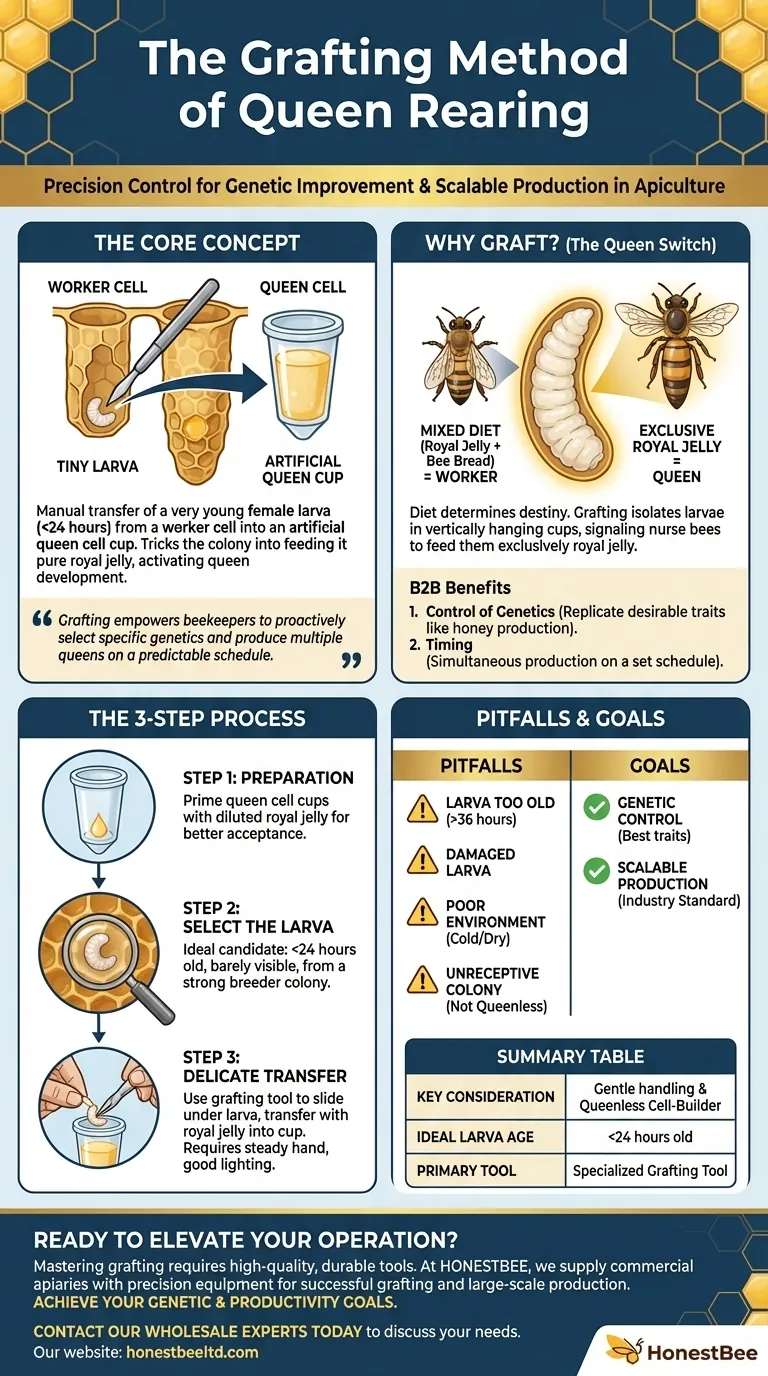
Related Products
- Black 2 Pack Beekeeper Queen Grafting Tool for Bee Queen Larva Transferring Needle
- Plastic Chinese Queen Grafting Tool for Bee Queen Rearing
- HONESTBEE Advanced Ergonomic Stainless Steel Hive Tool for Beekeeping
- No Grafting Queen Rearing Kit: System for Royal Jelly Production and Queen Rearing
- Professional 3-Bar Frame Grip with Integrated Hive Tool
People Also Ask
- What is the purpose of grafting in queen bee production? Scale Your Apiary with Superior Genetics
- What conditions should be avoided during grafting? Protect Your Queen Cells from Common Pitfalls
- What tools are used to transfer larvae into queen cell cups? A Guide to Grafting Tools for Queen Rearing
- What are the steps involved in using a queen grafting tool? A Guide to Successful Queen Rearing
- When do queens emerge after grafting? Master the 12-Day Critical Window


